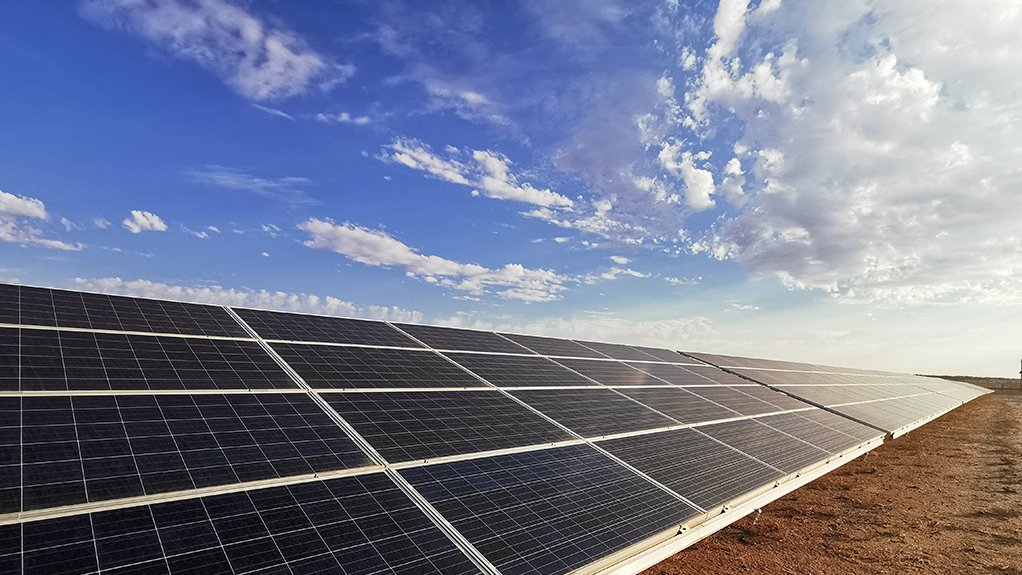Solar PV body questions technology costs and build limits in draft IRP
The South African Photovoltaic Industry Association (SAPVIA) questions both the cost assumptions used for the technology in the draft Integrated Resource Plan 2023 (IRP 2023), as well as the 900 MW yearly build limit placed on distributed solar in its formal submission to the department.
SAPVIA’s response, which was submitted ahead of the March 23 deadline for public comments, states that the technology cost assumptions for solar PV have been inaccurately estimated for Horizon 1 to 2030 (The draff IRP 2023 also includes Horizon 2 from 2030 to 2050).
The association, which has more than 800 members from across the solar value chain, also argues that the input cost assumptions for all renewable energy generation technologies appear higher than international benchmarks.
“Resultantly, the modelling outcomes in Horizon 1 contain less renewable generation capacity compared to the previous IRP iterations and less than benchmark studies and comparative modelling,” SAPVIA states, arguing that these assumptions should be amended to reflect costs associated with public and private projects already procured domestically.
The absence of technology learning rates and cost decreases is also highlighted, including expected significant cost decreases for battery storage.
SAPVIA, thus, recommends, that the department undertakes revised modelling with updated technology costing to develop a least-cost reference case against which later policy adjustments can be made.
The organisation has also urged the Department of Mineral Resources and Energy to clarify the rationale for placing a 900 MW yearly build limit on distributed solar, describing the rationale for the limit as “unclear”.
It highlights that the 900 MW constraint does not reflect Eskom data showing that 2 352 MW of private solar PV was installed from February 2023 to February 2024. Likewise, it does not align with the 384 solar PV project registrations with the regulator last year for a total capacity of 2 738 MW, or the SAPVIA Installed Capacity Dashboard, which recorded additions of 1 203 MW in the first quarter of 2023 alone.
CEO Dr Rethabile Melamu notes that there is already a mismatch between the prevailing IRP 2019 and solar PV installation rates and that there is likely to be even greater divergence should the draft IRP 2023 become the official plan.
While SAPVIA supports the splitting of the IRP into two horizon’s, it highlights that Horizon 1 does not adequately address loadshedding, which should be a primary objective.
“The updated IRP 2023 must indicate a stronger urgency towards energy security and a firm plan to eliminate loadshedding in Horizon 1.”
The comment document also points to a misalignment between the draft IRP 2023 and other government policy and recent industry development, including reforms under way in the electricity supply industry (ESI).
SAPVIA argues that, for effective implementation, the IRP should be calibrated with other policies, including the National Development Plan, Eskom’s Transmission Development Plan, the South African Renewable Energy Masterplan and the Electric Vehicles White Paper, as well as new electricity and climate legislation.
“Alignment between the IRP and the changing ESI landscape brought about by market reform in South Africa is crucial for policy certainty.
“Both are key enabling factors for private sector participation in the generation and, eventually, in the transmission and distribution industries,” SAPVIA argues.
Melamu indicates that SAPVIA is ready to collaborate with government in finalising the IRP 2023 either through additional consultations, or through structures such as the National Economic Development and Labour Council.
Comments
Press Office
Announcements
What's On
Subscribe to improve your user experience...
Option 1 (equivalent of R125 a month):
Receive a weekly copy of Creamer Media's Engineering News & Mining Weekly magazine
(print copy for those in South Africa and e-magazine for those outside of South Africa)
Receive daily email newsletters
Access to full search results
Access archive of magazine back copies
Access to Projects in Progress
Access to ONE Research Report of your choice in PDF format
Option 2 (equivalent of R375 a month):
All benefits from Option 1
PLUS
Access to Creamer Media's Research Channel Africa for ALL Research Reports, in PDF format, on various industrial and mining sectors
including Electricity; Water; Energy Transition; Hydrogen; Roads, Rail and Ports; Coal; Gold; Platinum; Battery Metals; etc.
Already a subscriber?
Forgotten your password?
Receive weekly copy of Creamer Media's Engineering News & Mining Weekly magazine (print copy for those in South Africa and e-magazine for those outside of South Africa)
➕
Recieve daily email newsletters
➕
Access to full search results
➕
Access archive of magazine back copies
➕
Access to Projects in Progress
➕
Access to ONE Research Report of your choice in PDF format
RESEARCH CHANNEL AFRICA
R4500 (equivalent of R375 a month)
SUBSCRIBEAll benefits from Option 1
➕
Access to Creamer Media's Research Channel Africa for ALL Research Reports on various industrial and mining sectors, in PDF format, including on:
Electricity
➕
Water
➕
Energy Transition
➕
Hydrogen
➕
Roads, Rail and Ports
➕
Coal
➕
Gold
➕
Platinum
➕
Battery Metals
➕
etc.
Receive all benefits from Option 1 or Option 2 delivered to numerous people at your company
➕
Multiple User names and Passwords for simultaneous log-ins
➕
Intranet integration access to all in your organisation





















